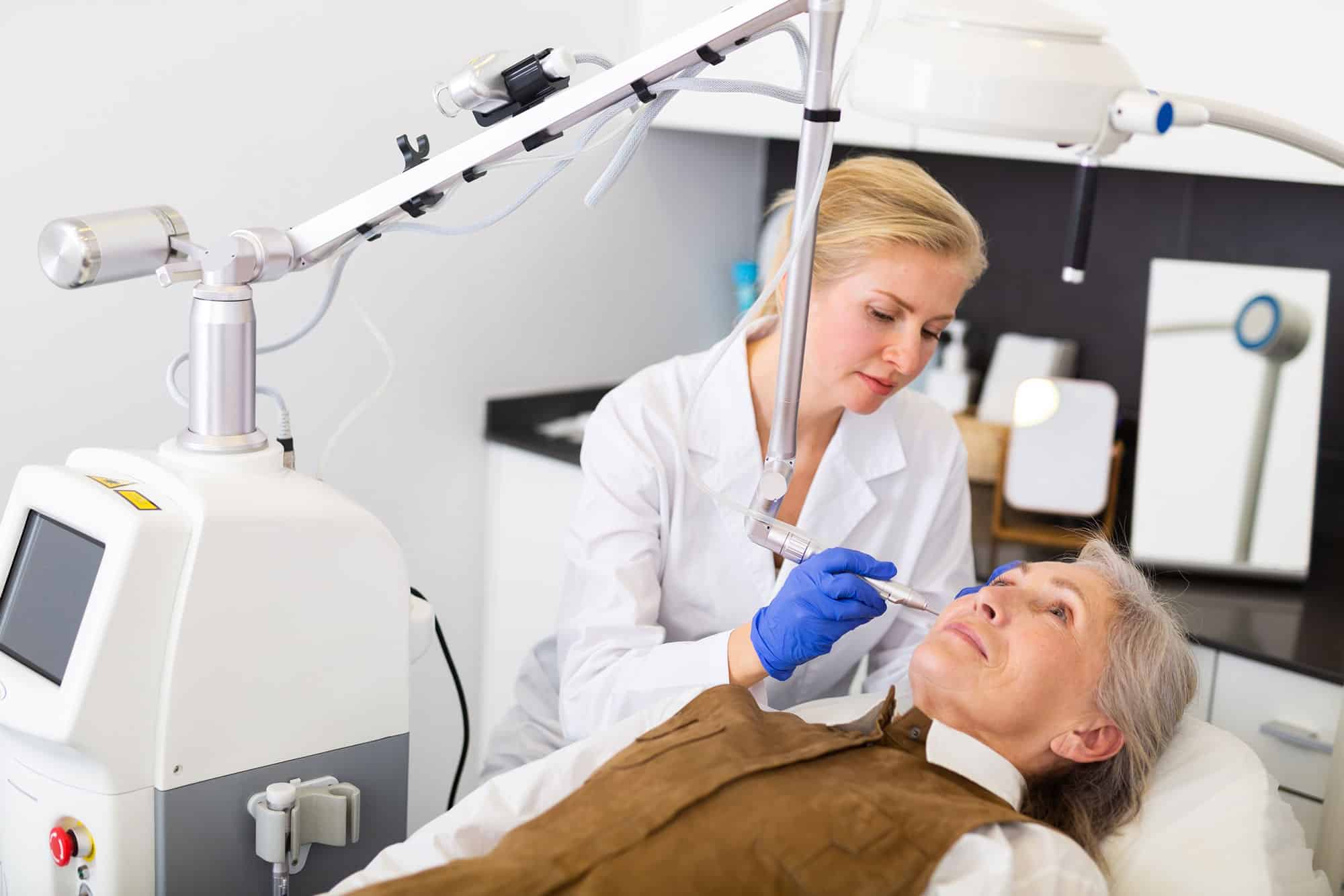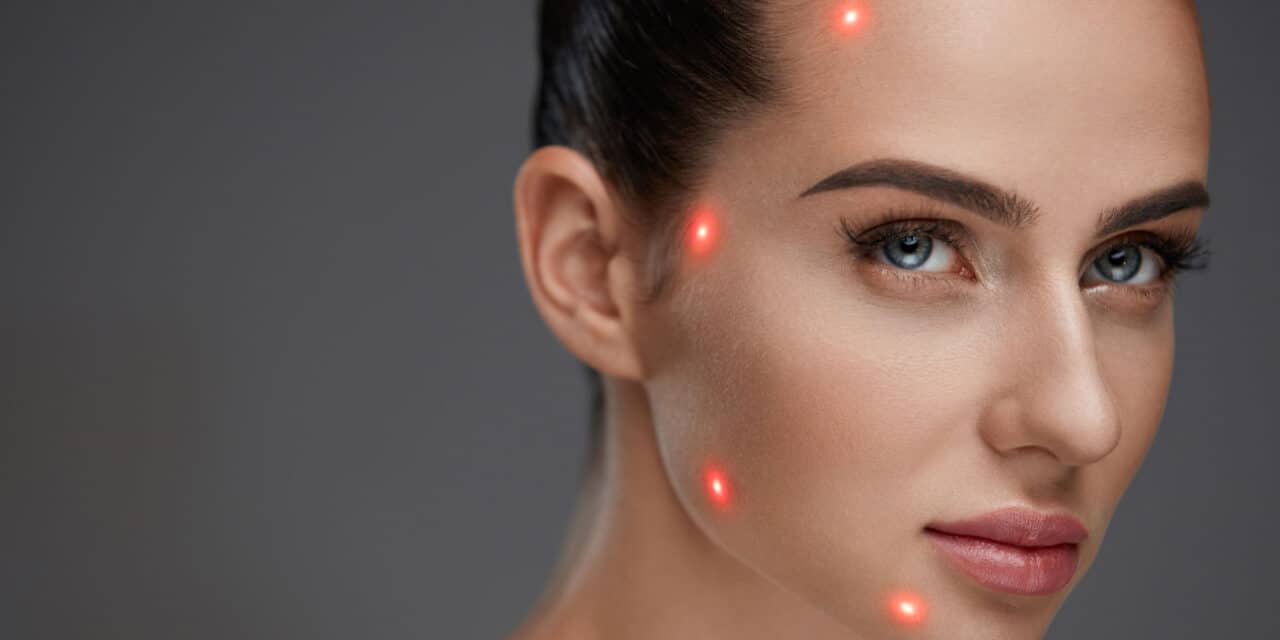The Evolving Landscape of Aesthetic Procedures
In the world of aesthetic medicine, lasers and energy-based devices have long been the gold standard for skin rejuvenation. From IPL (Intense Pulsed Light) to fractional CO₂ lasers, these technologies have consistently delivered impressive results in treating pigmentation, vascular lesions, and textural irregularities. Yet, as the field advances, practitioners are beginning to recognize a surprising ally in enhancing these outcomes: medical-grade skincare.
Traditionally seen as a supplementary component, skincare products were often relegated to post-procedural care, aimed at soothing the skin or maintaining results. However, emerging research is challenging this notion, suggesting that the integration of targeted skincare both before and during laser treatments could significantly amplify patient outcomes.
When Lasers Meet Lotions: A New Clinical Paradigm
A recent study led by Dr. Sherrif Ibrahim, Associate Professor of Dermatology at Rochester Medical Center and a procedural dermatologist specializing in aesthetic and skin cancer surgeries, has brought new attention to this evolving synergy. In collaboration with Sciton—a leading manufacturer of laser and light-based technologies—and Jan Marini Skin Research, Dr. Ibrahim conducted a study that explored the impact of combining broadband light (BBL) treatments with a structured skincare regimen.
The study divided patients into two groups:
- Group One received six weeks of pre-treatment with Jan Marini’s Skincare Management System, followed by two BBL sessions.
- Group Two underwent three BBL treatments without any changes to their existing skincare routines.
The hypothesis was simple: Could pre-treatment and concurrent use of professional-grade skincare enhance the results typically achieved by BBL alone? The findings were anything but simple—and they have the potential to reshape aesthetic protocols.
The Surprising Results: Skincare as a Clinical Enhancer
Dr. Ibrahim, a self-proclaimed “laser guy” and initial skeptic of skincare’s impact on procedural outcomes, admitted to being surprised by the results. The group that combined skincare with two BBL treatments achieved outcomes comparable to, and in some cases better than, those who had undergone three BBL sessions without skincare intervention. Metrics such as elasticity, pigmentation, pore size, and overall skin texture showed marked improvements across both groups, but the skincare group reached these endpoints more efficiently.
“What we found was not just additive—it was synergistic,” Dr. Ibrahim noted during the webinar. “The combination of skincare and BBL didn’t just yield better skin; it delivered those results faster and more effectively than we anticipated.”
This synergy suggests that high-quality, evidence-based skincare may prime the skin in ways that enhance its responsiveness to energy-based treatments. The implications of this finding could ripple through aesthetic practices, prompting a reevaluation of pre-treatment protocols that have traditionally focused solely on device settings and post-care.

The Science Behind the Synergy
The synergy between advanced skincare and laser treatments isn’t just anecdotal—it’s grounded in solid dermatological science. When skin is properly prepped and supported at the cellular level, its capacity to respond to energy-based treatments like broadband light (BBL) is significantly enhanced. This isn’t just about surface hydration or soothing post-procedure redness; it’s about fundamentally altering the skin’s biological environment to optimize its regenerative response.
In Dr. Ibrahim’s study, the Jan Marini Skincare Management System played a pivotal role, incorporating clinically validated ingredients that target key skin functions. Here’s how these components work together to enhance laser outcomes:
- Retinoids (e.g., Retinyl Palmitate): Stimulate fibroblast activity, boosting collagen and elastin production. A primed dermal matrix allows BBL’s photothermal energy to penetrate more effectively, enhancing both immediate and long-term skin rejuvenation.
- Antioxidants (e.g., Vitamin C, Green Tea Extract): Reduce oxidative stress, which is a major contributor to post-laser inflammation and delayed healing. By minimizing free radical damage, antioxidants help speed recovery and decrease redness and swelling after treatments.
- Hyaluronic Acid & Peptides: Strengthen the skin barrier, improving hydration and resilience. A robust barrier reduces transepidermal water loss (TEWL), minimizing post-procedural dryness and irritation, and enabling skin to better tolerate laser energy.
The cumulative effect of these ingredients creates a skin environment that’s biologically “ready” to maximize the benefits of BBL, leading to superior aesthetic outcomes with fewer sessions and faster recovery.
This isn’t just theoretical. Similar findings have been echoed in dermatological research. A 2021 publication in the Journal of Cosmetic Dermatology demonstrated that pre-treatment with a topical regimen containing peptides and antioxidants significantly improved recovery and outcomes after fractional laser treatments. Patients experienced quicker healing, reduced redness, and enhanced overall skin texture compared to those treated with lasers alone.
The takeaway? Skincare isn’t just an afterthought—it’s a critical part of the treatment. As both research and clinical experience continue to align, integrating skincare into laser protocols is quickly becoming the new standard in aesthetic medicine.
From Skepticism to Standard of Care?
Historically, many in the aesthetic field—including seasoned dermatologists and plastic surgeons—have been skeptical of the role skincare could play in enhancing procedural outcomes. Dr. Sherrif Ibrahim himself candidly admitted he didn’t give much thought to pre-treatment regimens before this study. “I thought the lasers did such a good job on their own, there wasn’t much point in adding skincare,” he remarked during the webinar. For many practitioners, this sentiment rings true. After all, when you’re working with state-of-the-art devices like Sciton’s BBL HERO, it’s easy to assume the technology alone is sufficient.
However, the results of this study challenged that assumption. Not only did the skincare group match the outcomes of the additional BBL session, but patients also reported greater satisfaction and faster visible improvements. “I was a skincare skeptic,” Dr. Ibrahim admitted, “but the data doesn’t lie. The synergy was undeniable.”
This shift in perspective isn’t isolated to Dr. Ibrahim’s practice. As more clinicians are exposed to data supporting the integration of skincare into procedural protocols, there’s a growing movement toward making it a standard part of treatment plans. It’s not just about achieving better results—it’s about optimizing the entire patient experience. Reduced treatment sessions mean less time in the clinic for patients, faster achievement of aesthetic goals, and, in many cases, lower overall costs.
For practitioners, embracing skincare as part of pre-treatment isn’t just about patient satisfaction—it’s also about enhancing the efficiency and reputation of their practice. Offering comprehensive care that includes both cutting-edge technology and evidence-based topical treatments positions a practice at the forefront of aesthetic medicine. It signals to patients that the clinic isn’t just about devices; it’s about delivering holistic, science-backed solutions.
Is Skincare the Missing Link in Your Laser Treatments?
Implications for Aesthetic Practices
The clinical implications of Dr. Ibrahim’s study are clear, but the business and operational impacts for aesthetic practices are equally compelling. Integrating a structured skincare regimen like the Jan Marini Skincare Management System into treatment protocols offers a multi-faceted advantage that extends beyond improved patient outcomes.
First, there’s the matter of patient engagement and satisfaction. Patients who actively participate in their care—whether through at-home skincare routines or lifestyle adjustments—tend to feel more invested in their treatment outcomes. In Dr. Ibrahim’s study, patients in the skincare group reported feeling more empowered and engaged with their treatment process. This sense of ownership often translates to higher patient satisfaction, better compliance with post-treatment protocols, and increased likelihood of returning for additional procedures. In fact, many of Dr. Ibrahim’s patients requested to continue using the Jan Marini products after the study ended, highlighting the lasting impression that effective skincare can leave.
Second, there’s the economic benefit. Skincare products represent a low-overhead, high-margin addition to any aesthetic practice. While energy-based treatments like BBL come with significant equipment costs, maintenance fees, and time-intensive sessions, skincare products offer a relatively passive revenue stream. Dr. Ibrahim noted that selling the Jan Marini Skincare Management System, which retails for around $350 with a wholesale cost of $175, provided a direct and consistent source of profit. Multiply this across a patient base returning for refills several times a year, and the numbers quickly add up.
Moreover, combining skincare with treatments can optimize practice efficiency. By achieving better results with fewer sessions, practitioners can open up appointment slots for new patients or more complex procedures. This increases patient throughput without compromising the quality of care, ultimately leading to higher revenue per hour of clinic time.
Finally, offering comprehensive care enhances a practice’s reputation. In today’s competitive aesthetic landscape, patients are looking for providers who offer more than just the basics. They want cutting-edge technology, personalized treatment plans, and holistic care that addresses their skin’s needs from every angle. By incorporating skincare into treatment protocols, practitioners signal that they’re at the forefront of both technology and dermatological science.
In Dr. Ibrahim’s words, “Patients came in expecting lasers to do all the work. But when they saw the difference that skincare made, they were blown away. It wasn’t just about looking better—it was about feeling like they had control over their results.”
The Future of Combination Therapy in Aesthetic Medicine
Dr. Ibrahim’s study is a testament to the evolving nature of aesthetic medicine, where the boundaries between devices, products, and procedures are increasingly blurred. As more research emerges supporting the synergistic effects of skincare and laser treatments, the industry may see a shift towards more holistic, integrated approaches to patient care.
For now, the message is clear: Skincare is no longer just a maintenance tool—it’s a performance enhancer. And for practitioners looking to stay at the forefront of aesthetic innovation, embracing this synergy could be the key to unlocking superior patient outcomes.
References
- Smith, A. et al. (2020). The Role of Antioxidant Serums in Enhancing Fractional Laser Resurfacing Outcomes. Lasers in Surgery and Medicine, 52(8), 707-714.
- Johnson, K. et al. (2018). Pre-Treatment Skincare in Dermatologic Procedures: A Meta-Analysis. Dermatologic Surgery, 44(3), 401-410.
- Ibrahim, S. (2024). Combining Broadband Light (BBL) with Skincare: A Study on Enhanced Outcomes. Physician Webinar Series, Jan Marini Skin Research.
Sponsored By

Medqor is committed to protecting and respecting your privacy. We may contact you about our products and services or share information with sponsorship partners, as well as other content that may be of interest to you. By submitting your information, you consent to us contacting you for this purpose in accordance with our privacy policy.
For further information, please check out our privacy policy here





